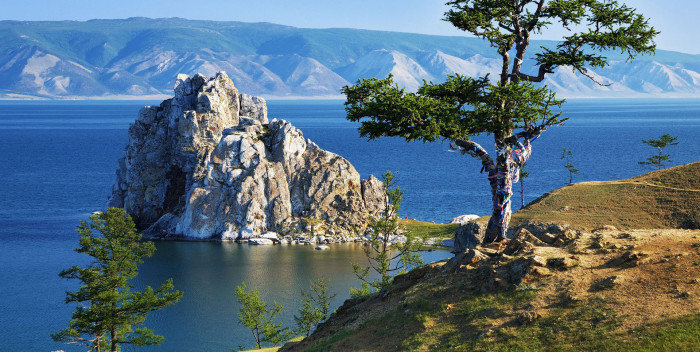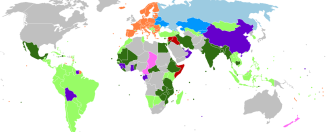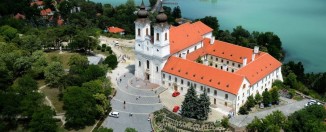Beautiful lakes worth seeing
Amazing, beautiful, sometimes dangerous lakes located in different parts of the planet arouse the curiosity of thousands of travelers who are ready to break into the most exotic country, just to see with their own eyes what the whole world is talking about. Since ancient times, lakes have been assigned a mysterious power and miraculous properties beyond the control of the human mind; they invariably attract people with tranquility and grandeur. Emerald, blue, indigo and even poisonous pink - we know everything about them and we do not know anything. In this article, we will try to at least slightly open that veil of secrets and tell about some of the secrets and features of the world's greatest lakes.
Lake Hillier 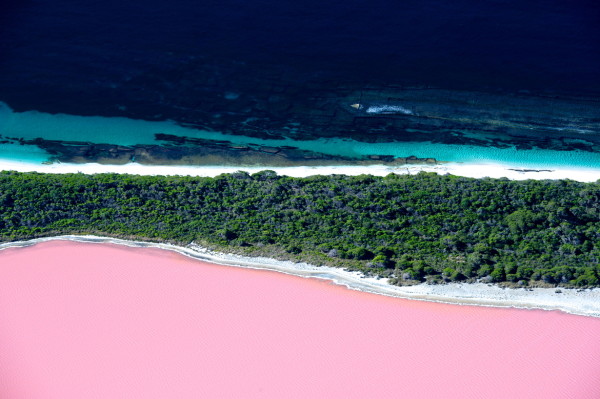
Even those tourists, who have never visited Australia yet, must have heard of an unusual body of water located on the very edge of the island on the country's west coast. Why is this lake so remarkable?
Here you will not find unusual properties of water or rare aquatic life, in addition, the lake is considered shallow and quite small compared to other beautiful bodies of water. The highlight of Hillier lies in its color - it is bright pink, the shade of the lake is especially striking if you look at it from above, because there is a blue ocean nearby.
Until now, scientists cannot determine what exactly gives the lake its pink color, but most of them lean towards one option - it's all about the microorganisms that populate the reservoir, they secrete a special pigment (it is also found in carrots), but there is still evidence of this hypothesis does not exist.
Someone prefers not to look for a real reason, but to believe an old legend, according to which a sailor, once on the island, suffered from hunger and thirst for a long time and begged the devil to save him at any cost. Soon a strange man appeared and poured a jug of milk and blood into the lake, which made Hillier turn pink. After that, the sailor bathed in the water and was rescued.
Salt Lake Hillier was discovered in the 19th century, an English navigator, while moving to Sydney, noticed an unusual body of water and took a sample. At the beginning of the 20th century, salt was mined here, however, after 6 years the activity ceased.
Now the lake is one of the wonderful tourist spots surrounded by a eucalyptus forest, it is completely safe and suitable for swimming, however, due to its shallow depth, it will be difficult to implement. The easiest way to get to Hillier is by helicopter.
Lake Baikal 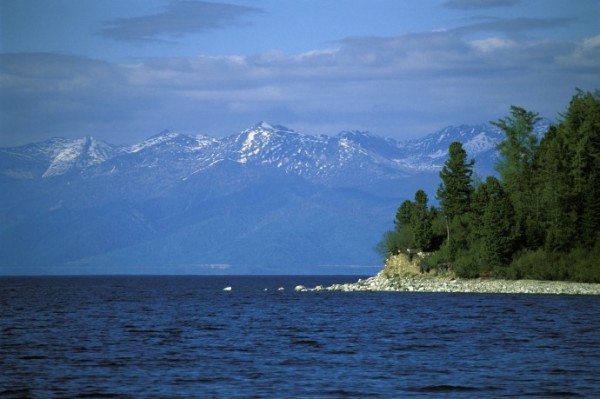
Without a doubt, not only all residents know about this majestic lake Of Russia but also most people abroad. Its size is amazing, we all studied its unique properties from geography textbooks, but no film or book can convey all the beauty of Baikal-Father, as the Russians affectionately call it.
Baikal stretches like an azure crescent in the south of Eastern Siberia, everyone talks about its uniqueness, but what is it?
Firstly, it is the oldest lake in the whole world, its age is approximately 25-35 million years. No lake of glacial origin can boast of such a venerable age, because usually after a few thousand years, reservoirs like Lake Baikal turn into a swamp, becoming polluted with silt.
Secondly, Baikal is one of the ten largest lakes (about 31,700 square kilometers), is the largest reservoir of fresh water and surpasses any body of water in depth - this is known to any schoolchild. Tourists from abroad often compare Baikal with the sea, this is not surprising, because its area is equal to a small European state.
Well, of course, one cannot mention the unique properties of water. The lucky ones who have been there claim that in some parts of the lake you can see an object at a depth of 40 meters, so the water of Lake Baikal is crystal clear. And the absence of any organic impurities and the maximum enrichment with oxygen provides a huge variety of the natural world in the depths of the lake and on the coast.
Of course, with dry numbers and statements of facts, it is difficult to convey the grandeur of Lake Baikal, and this becomes an excellent reason to go on an exciting journey.
Crater lake 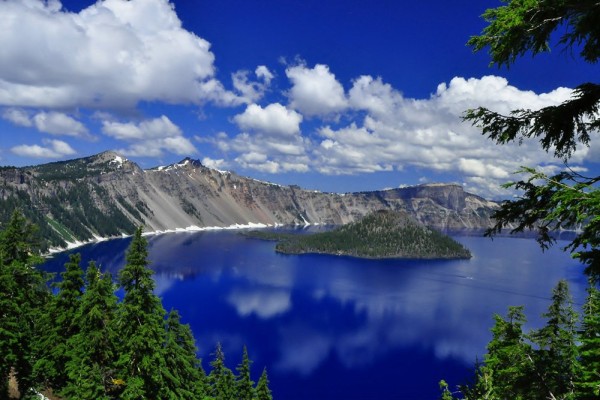
Especially for the protection of Crater Lake, which is located in southern Oregon (USA), a national park was created more than a century ago. This reservoir is unique in its kind, also due to its poisonous blue hue. This is explained quite simply - the lake is deep (almost 600 meters deep), this makes it one of the record holders for this indicator, and the water itself has a high degree of transparency, so it absorbs all shades of the color spectrum.
Annually thousands of tourists come to the state to admire this natural phenomenon. And because of the wonderful shade of indigo, and because of the unusual location of Kreiter - in the long-extinct crater of Mount Mazama volcano. According to researchers, the last eruption took place about 7,700 years ago, then the crater began to press under its own weight and eventually filled with rainwater and melted snow, which explains its crystal purity and transparency. In addition, the Crater has no tributaries or outflows of rivers.
The nature of the appearance of the lake determined the peculiarity of the existence of fauna in it - initially there was no fish there and could not be. But over time, several species of fish were launched into the Crater, and tourists are not prohibited from catching them here.
Plitvice Lakes 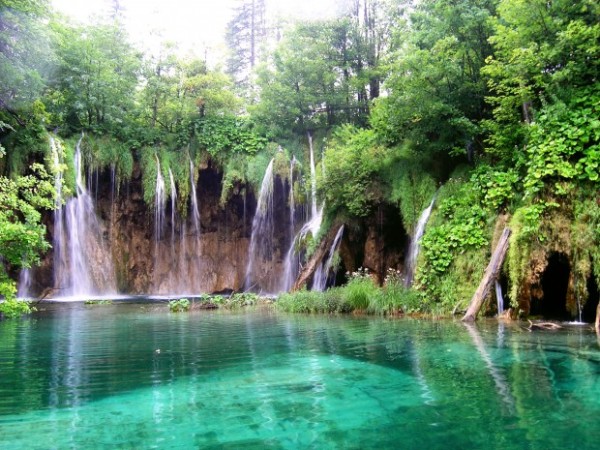
Croatian miracle of nature or the eighth wonder of the world, as the Croats themselves say. All this is about the world famous Plitvice Lakes National Park. In the late 70s of the 20th century, an unusually beautiful cascade reservoir on the border with Bosnia and Herzegovina, which was later included in the UNESCO World Heritage List, became a discovery for scientists.
Having been here once, it will be impossible to forget this fabulous picture - among the coniferous and beech thickets of the "Devil's Forest", in the mountain valley, there are 16 Plitvice Lakes, shining and shimmering in the sun's rays. Each of them passes into another, forming a foamy waterfall and filling almost the entire valley, because over the millennia of its existence, the waters have dissolved limestone rocks.
How many waterfalls and streams exist at the moment, no one will undertake to calculate, because every year, thanks to plants that can absorb calcium from lakes, dams and rapids are formed. Hardened trees and shrubs cover a certain area and new waterfalls are being born.
Tourists move along special wooden decks, routes are selected depending on the complexity and duration, it will take two days to get around at least the largest lakes.
Kelimutu 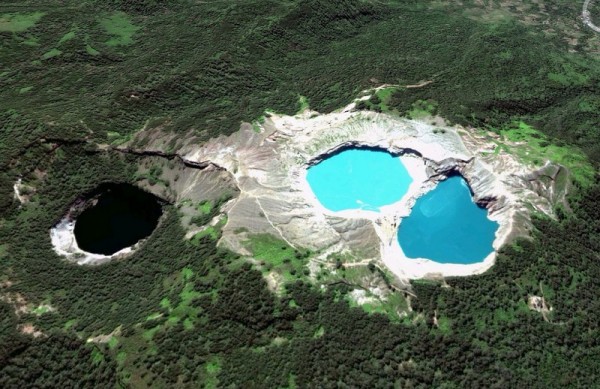
Here is another striking example of lakes of volcanic origin, formed after the eruption in the crater on Mount Kelimutu. The Indonesian volcano last showed signs of activity back in the 60s of the last century, but the most interesting thing is at its top - these are three small but deep lakes, which differ significantly from each other in color. Perhaps this is the only example of reservoirs so different in shade, and the colors change over time. Scientists attribute this phenomenon to a chemical reaction between gases and various mineral rocks.
The lakes on Kelimutu are covered with many ancient legends, the locals are sure that the souls of deceased ancestors live in the depths, each of the reservoirs, depending on its shade (the mood of the ancestors), has its own name. One of them is bright blue, the Lake of Old Men, located one and a half kilometers from the other two. As the legend says, after death, the souls of the elderly who led a righteous life find their last refuge in it. The other two are located next to each other, separated only by the crater wall, which symbolizes the fine line between good and evil. The pool of emerald color is called the Lake of young people and girls, it is believed that pure innocent souls go there, and very close to the Enchanted Lake, in which the souls of sinners, murderers and criminals live, regardless of gender and age, it usually takes a brown and even bright red hue , often a cloud of steam rises over the Lake of Evil Souls.
Despite the fact that Kelimutu is little known outside Indonesia, at least once visited here tourists, agree - this is another miracle of nature, because you can never guess what color the lakes will be in the next hour. The pre-dawn rays give this place a special charm, after which the volcano is covered with fog, which dissipates only closer to noon.
Nakuru 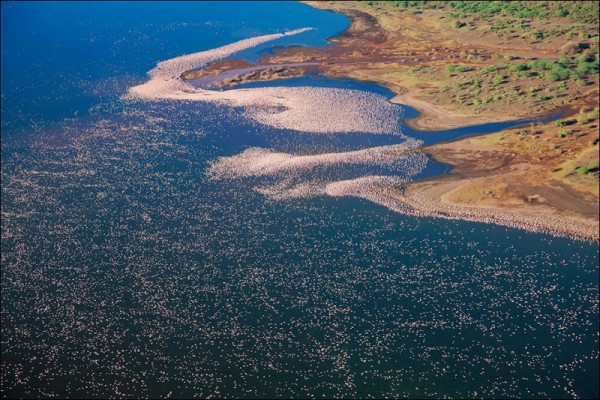
When you first come to Kenya National Park, where the famous Lake Nakuru is located, you may be disappointed not to see the pleasing crystal clear waters or picturesque surroundings. At first glance, this is a completely ordinary reservoir, shallow, in some places turning into a swamp (not without reason the name of the lake in translation means "dusty place"). In addition, for most species of animals and birds, the lake is not a source of rest or food. But after some time, Nakuru magically transforms, everything around is echoed by the cry of a thousand birds, and the water surface acquires a pink hue, this is especially noticeable when viewed from a height. The thing is, Nakuru is home to the most beautiful birds in the world, the pink flamingos.
Experts say that a huge fresh water body once existed on the black continent, but over time the climate and landscape have changed significantly, in such difficult natural conditions only three small lakes remained, which for centuries have been saturated with salt and soda from volcanic rocks in the depths of Nakuru. As a result, only a few species of plankton have taken root in the reservoir, one species of fish and algae, which colors the waters green and makes them thicker. They attract not only graceful flamingos, but also many other birds. Scientists believe that this is the most grandiose ornithological spectacle on the entire planet.
Havasu 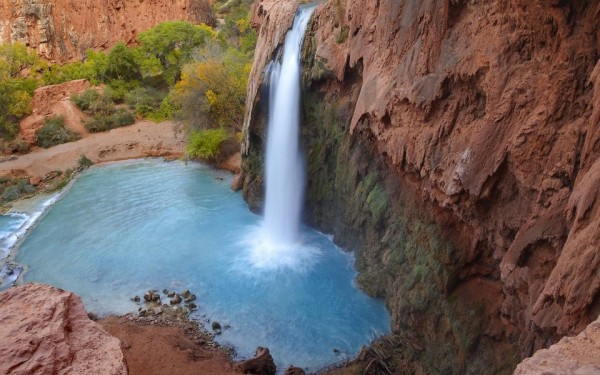
Havasu waterfall and local mini-lakes are considered almost the most important attraction Grand Canyon (USA, Arizona). Photos of this area can be seen on gift calendars, guidebooks and maps. Tourists who are lucky enough to get here may get the impression that they are in a heavenly place somewhere in Hawaii, and all thanks to the bright turquoise water and picturesque landscapes. The secret of this blueness of Havasu lies in the high content of magnesium, which is washed out of the rock. The lake looks unusual and attractive in contrast to the red walls of the Grand Canyon; nearby you can sunbathe on the sandy shore or relax in the shade of spreading trees.
An interesting fact is that some 100 years ago in the Canyon there was a completely different waterfall called "Wedding Veil" - stormy and wide. Due to severe flooding, the waterfall was literally demolished, and in its place was born another - Havasu. Since then, it has changed little, and thousands of travelers around the world flock to Arizona to enjoy being in this paradise on earth.
Moiraine 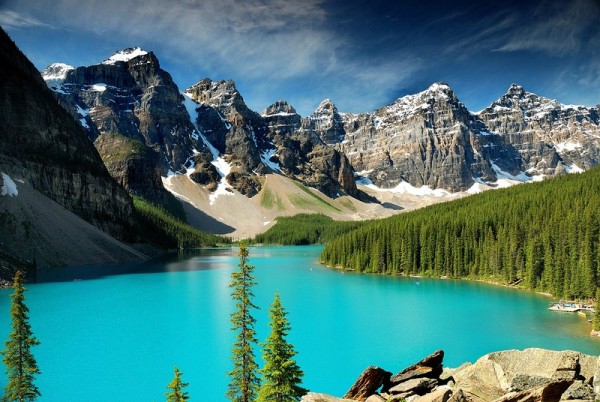
A glacial lake called Moraine is located in Banff National Park in the southwest and is the main pride of the people of Canada.
Having first discovered at the end of the 19th century an extraordinary beauty of a reservoir, Walter Wilcox recalls that for half an hour he could not recover from the shock, so much struck by his greatness Moiraine, which was supposedly drawn by the hand of a great artist. And this is not an exaggeration, the lake is indeed amazingly picturesque, it is surrounded by coniferous forests and ten snow-capped mountain peaks, their height reaches about 3 thousand above sea level, and the Moraine water is like crystal, an unreal turquoise hue, in which the local landscape is reflected like in a mirror.
How can you explain the fabulous, unnaturally blue hue of the lake? In fact, everything is simple - particles and small deposits of glaciers give a similar effect, they settle at the bottom and thus "illuminate" the Moiraine from the inside.
Tourists those who come to the National Park can enjoy scenic views, fishing and canoeing, and see some species of animals and birds.
